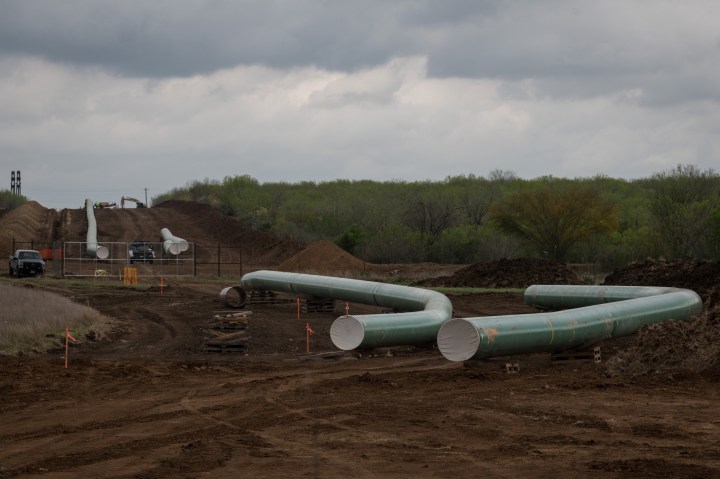
U.S. oil prices fall below zero for the first time

The price of U.S. crude oil has fallen into negative territory for the first time ever.
On Monday, a barrel of West Texas Intermediate crude oil (the standard oil produced in the U.S.) dropped to negative $37.63. In other words, if you wanted a barrel of oil right now, someone would have to pay you — not the other way around.
This is the price on the May futures contract, which expires tomorrow afternoon. Futures contracts are a type of financial security in which two parties agree to buy or sell an asset on a predetermined date at a predetermined price.
Traders holding that contract have to accept the oil they purchased, but storage capacity is extremely limited right now because of a decline in demand.
“You can usually make money by storing crude and selling it at a higher price on the futures market,” Amelie Carlton, an economics lecturer at Rice University, told Marketplace. “But future traders … don’t want to take delivery of barrels of oil. So what they’re doing is they’re trying to get rid of the physical delivery and selling out of those May positions, which is creating a negative price.”
The decline marks a stark contrast with prices at the beginning of the year, when a barrel of WTI oil cost more than $60. The plunge in demand has also pushed down the average gas price in the U.S. to $1.81 a gallon ($1 cheaper than a year ago), according to AAA.
Stocks declined in reaction to the news, with the Dow Jones Industrial Average dropping more than 592 points.
However, a barrel of WTI crude is trading at $20.43 per barrel for the June futures contract and at $26.18 for the July futures contract.
“That’s more reflective of the real price of a barrel of oil,” Carlton said. “The May contract price — which is negative and dropped substantially today — is more reflective of people’s positions in the market and whether or not they want to accept the physical delivery of a barrel of oil.”
Additional reporting by Bennett Purser.
There’s a lot happening in the world. Through it all, Marketplace is here for you.
You rely on Marketplace to break down the world’s events and tell you how it affects you in a fact-based, approachable way. We rely on your financial support to keep making that possible.
Your donation today powers the independent journalism that you rely on. For just $5/month, you can help sustain Marketplace so we can keep reporting on the things that matter to you.

















